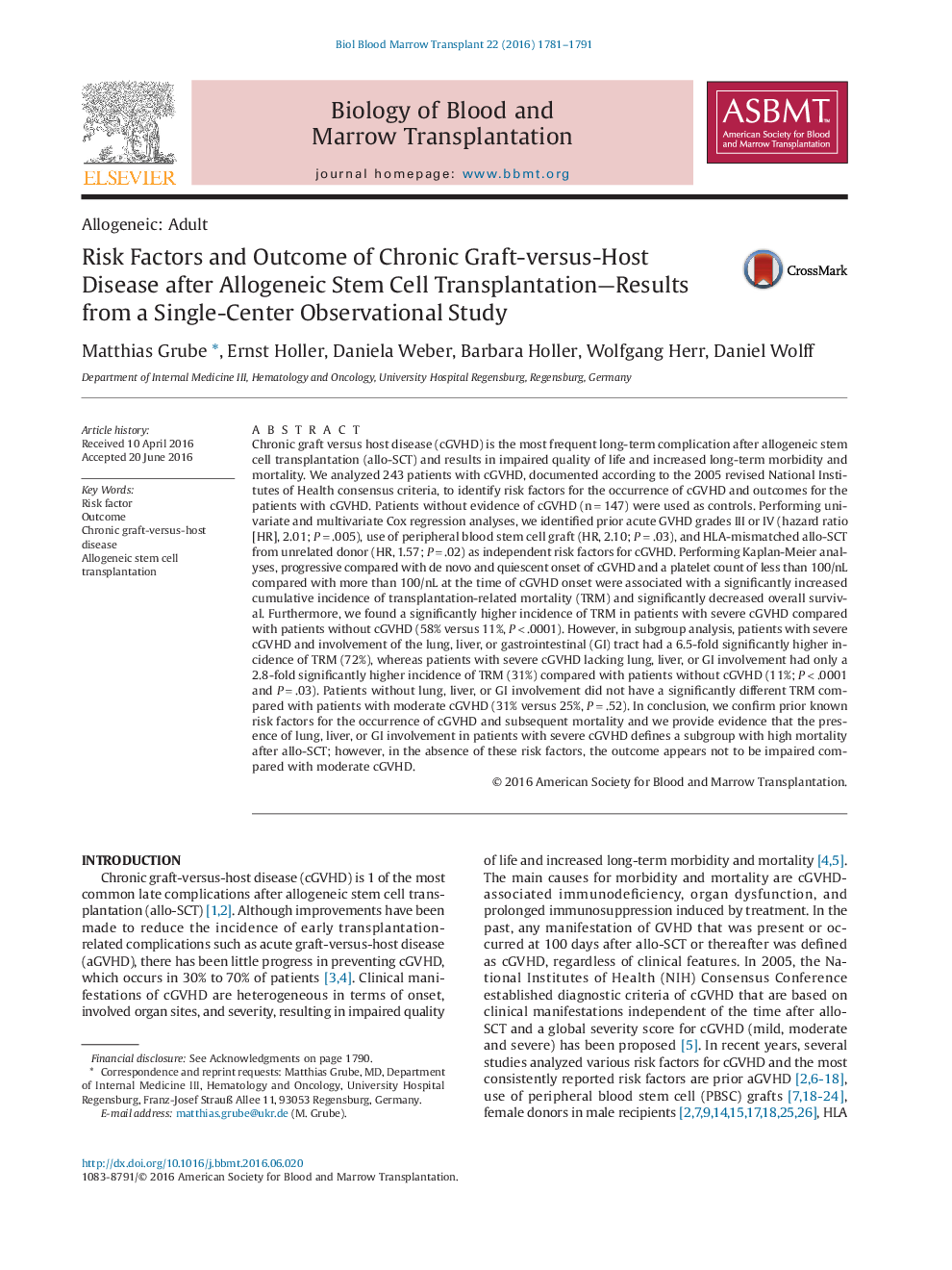| Article ID | Journal | Published Year | Pages | File Type |
|---|---|---|---|---|
| 5524548 | Biology of Blood and Marrow Transplantation | 2016 | 11 Pages |
â¢Risk factors for the occurrence and outcome of chronic graft-versus-host disease were analyzedâ¢Chronic graft-versus-host disease was documented according to the 2005 revised National Institutes of Health consensus criteriaâ¢Known risk factors for chronic graft-versus-host disease and subsequent mortality were confirmedâ¢Severe chronic graft-versus-host disease with lung, liver, or gastrointestinal involvement is a subgroup with high mortality
Chronic graft versus host disease (cGVHD) is the most frequent long-term complication after allogeneic stem cell transplantation (allo-SCT) and results in impaired quality of life and increased long-term morbidity and mortality. We analyzed 243 patients with cGVHD, documented according to the 2005 revised National Institutes of Health consensus criteria, to identify risk factors for the occurrence of cGVHD and outcomes for the patients with cGVHD. Patients without evidence of cGVHD (nâ=â147) were used as controls. Performing univariate and multivariate Cox regression analyses, we identified prior acute GVHD grades III or IV (hazard ratio [HR], 2.01; Pâ=â.005), use of peripheral blood stem cell graft (HR, 2.10; Pâ=â.03), and HLA-mismatched allo-SCT from unrelated donor (HR, 1.57; Pâ=â.02) as independent risk factors for cGVHD. Performing Kaplan-Meier analyses, progressive compared with de novo and quiescent onset of cGVHD and a platelet count of less than 100/nL compared with more than 100/nL at the time of cGVHD onset were associated with a significantly increased cumulative incidence of transplantation-related mortality (TRM) and significantly decreased overall survival. Furthermore, we found a significantly higher incidence of TRM in patients with severe cGVHD compared with patients without cGVHD (58% versus 11%, Pâ<â.0001). However, in subgroup analysis, patients with severe cGVHD and involvement of the lung, liver, or gastrointestinal (GI) tract had a 6.5-fold significantly higher incidence of TRM (72%), whereas patients with severe cGVHD lacking lung, liver, or GI involvement had only a 2.8-fold significantly higher incidence of TRM (31%) compared with patients without cGVHD (11%; Pâ<â.0001 and Pâ=â.03). Patients without lung, liver, or GI involvement did not have a significantly different TRM compared with patients with moderate cGVHD (31% versus 25%, Pâ=â.52). In conclusion, we confirm prior known risk factors for the occurrence of cGVHD and subsequent mortality and we provide evidence that the presence of lung, liver, or GI involvement in patients with severe cGVHD defines a subgroup with high mortality after allo-SCT; however, in the absence of these risk factors, the outcome appears not to be impaired compared with moderate cGVHD.
